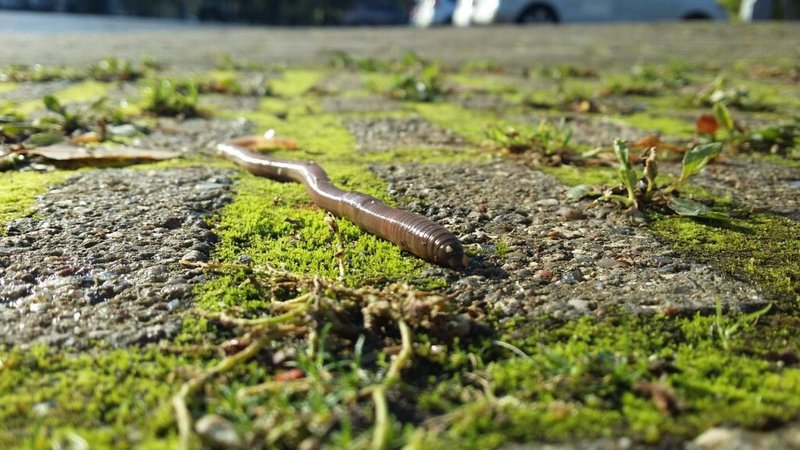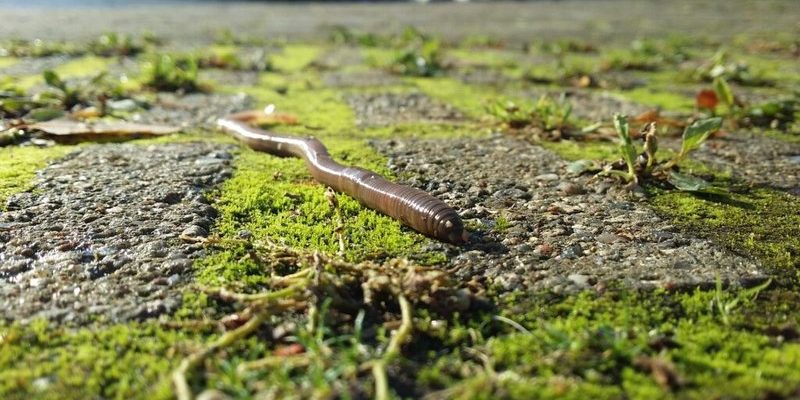
When you’re thinking about keeping inchworms in a terrarium, it’s important to consider a few things. For one, inchworms are the caterpillar stage of certain moths and butterflies, so they have specific needs during this phase of their life cycle. These include the right food, temperature, and humidity levels—much like any other living creature. So, can you keep them? Let’s dive deeper into the world of inchworms and find out how to create an ideal habitat for them.
What Are Inchworms, Exactly?
Before we get into how to keep inchworms, let’s start with what they are! Inchworms are the larvae of moths in the family Geometridae. They’re known for their unique movement, which resembles measuring an inch, hence the name. As they move, they curl and straighten their bodies, making them look like tiny, green measuring tapes.
Inchworms come in various colors, including green, brown, and even shades of yellow, helping them camouflage against leaves and branches. This color variation not only serves as protection against predators but also makes them a fascinating addition to a terrarium. You might find the most common types in your garden, depending on the season.
The lifespan of an inchworm varies depending on its species and environment, ranging from a few weeks to a couple of months. During this time, they munch on leaves and can grow quite rapidly. Just picture them feasting away, making them not just cute but interesting to watch!
Setting Up Your Observation Terrarium
So, you’re ready to create a home for your new inchworms! First things first: you’ll need a **glass or plastic terrarium** to observe them. A simple container works; just ensure it has enough airflow. Here’s how to get started:
1. **Choose the Right Size**: A container of at least 10 gallons is ideal, as it provides enough space for a few inchworms to thrive.
2. **Add a Base Layer**: Use a mix of soil and organic matter to create a natural environment. This layer should be about 2-3 inches deep. Adding leaves can help maintain humidity, which inchworms love.
3. **Include Plants**: You’ll want to add some small plants or branches for your inchworms to munch on. They typically enjoy deciduous leaves, like those from oak or maple trees.
Let’s not forget about moisture! It’s essential to keep the terrarium humid but not soggy. A gentle misting every few days can help maintain the right balance. Just think of it as giving your inchworms their own little tropical paradise.
Feeding Your Inchworms
One of the most crucial aspects of keeping inchworms is ensuring they have the right food. They’re generally picky eaters, but here are some key points to remember:
- Leaf Selection: Fresh leaves are a must. Choose leaves from trees like oak, maple, or some fruit trees. Make sure the leaves are pesticide-free!
- Quantity: Depending on the number of inchworms, you’ll need to provide enough food. Watch them eat—if they’re getting through the leaves quickly, it’s time to add more!
- Frequency: Change out any wilting or rotting leaves to keep the habitat fresh and attractive for the inchworms. Just like us, they don’t want to eat stale food!
You might be wondering how often to feed them. A good rule of thumb is to check the leaves every day or every other day. You’ll get to know your inchworms’ eating habits pretty quickly!
Temperature and Humidity Requirements
Creating the right climate is vital for keeping inchworms happy in your terrarium. These little creatures thrive in **temperatures** between 65°F to 75°F (18°C to 24°C). Too hot or too cold, and you might see your inchworms becoming inactive. Here’s how to maintain the right environment:
– **Monitoring Temperature**: Use a simple thermometer to check the temp regularly. If your home tends to be on the cooler side, consider placing the terrarium in a warm spot but not in direct sunlight.
– **Humidity Levels**: Aim for about 60-70% humidity. If it’s too dry, a light misting will help. Conversely, if it gets too humid, open the lid to promote airflow.
Finding this balance can be a bit of a juggling act, but once you get it right, your inchworms will thrive.
Observing Behavior and Growth
One of the best parts of keeping inchworms in a terrarium is watching them grow and change. It’s like having a front-row seat to nature’s magic show!
As inchworms mature, you’ll notice they start to behave differently. They may become more active or develop new colors as they shed their skin. This process, called molting, is exciting to witness. You might even notice yourself checking in on them regularly—like a proud parent watching their children grow!
Keeping a journal of their growth, behavior, and changes can be a fun way to observe their lifecycle. You can note how long they take to munch through a leaf or when they seem most active. This helps enhance your understanding of their needs and behaviors.
Common Challenges to Consider
Like any pet, keeping inchworms comes with its own set of challenges. Here are a few things to watch out for:
– **Pests or Mold**: If your terrarium is too humid or dirty, you might encounter mold or pests. Keep an eye on the environment and clean regularly to avoid this.
– **Inactivity**: If your inchworms seem sluggish, it could be a sign of improper temperature or food issues. Adjusting their environment might bring them back to life.
– **Limited Life Span**: Remember, inchworms are not pets that you’ll have for years. Understanding their lifecycle helps set expectations. They’ll transform into moths, so consider your terrarium’s purpose beyond just observing them.
By being mindful of these challenges, you can create a better environment for them while learning more about their fascinating life cycle.
Wrapping It Up: The Joy of Keeping Inchworms
In conclusion, keeping inchworms in an observation terrarium can be a rewarding experience. It’s a great way to connect with nature and learn about the lifecycle of these unique creatures. Remember to provide them with a suitable environment, the right food, and regular care. Soon, you’ll find yourself captivated by their growth and behavior.
Whether you’re a budding entomologist or just looking for a new hobby, inchworms offer an excellent opportunity for observation and education. So grab that terrarium, gather some leaves, and get ready to embark on a tiny adventure right in your own home!

